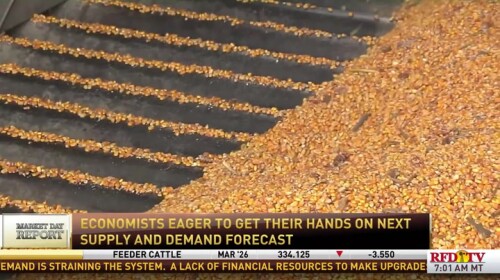Corn
The U.S. has a bountiful corn supply, but markets are waiting for the January WASDE Report, which will include updated yield estimates.
A permanent national E15 standard would boost corn demand, lower fuel costs, and provide a stable path for U.S. energy security.
Stable U.S. fundamentals continue for major crops, but global adjustments in corn, soybeans, wheat, and cotton may influence early-2026 pricing.
Corn and wheat exports continue to outperform last year, while soybeans show steady but subdued movement compared to 2024.
Mold damage is tightening China’s corn supplies, supporting higher prices and creating potential demand for alternative feed grains in early 2026.
While this month’s WASDE report will not include updated figures on U.S. crop size, officials say it will offer a clearer picture of crop conditions in the Southern Hemisphere.
Southern producers head into 2026 with thin margins, tighter credit, and rising agronomic risks despite scattered yield improvements.
Record yields and exceptionally low BCFM strengthen U.S. corn’s competitive position in global markets.
Credit stress is building for row-crop farms despite steady land values and slight price improvements.
American soybean and corn leaders, along with Canada’s AgriFood sector, testified before the U.S. Trade Representative’s Office in support of the trade pact between the U.S., Mexico, and Canada.
Pressure on grain storage capacity and stronger export positioning are pushing more grain onto railroads, highways, and river systems as logistics become a key bottleneck this fall.
Tryston Beyrer, Crop Nutrition Lead at The Mosaic Company, examines planning trends as producers weigh corn and soybean plantings for 2026.
Corn exports remain strong, while soybeans and wheat shift week to week on river conditions and global demand.
Lower tariff rates and new rail-service proposals may improve corn movement efficiency during early-season marketing.
Heavy rains are wreaking havoc on Argentina’s farmland, leaving nearly 4 million acres at risk and delaying corn and soybean plantings in one of the world’s top grain export regions.
Lewis Williamson with HTS Commodities shares an update on post-WASDE grain movement, with corn leading export momentum, soybeans steady, and wheat and sorghum continuing to move selectively.
Strong U.S. yields and steady demand leave most major crops well supplied, keeping price pressure in place unless usage strengthens or weather shifts outlooks.
While agriculture doesn’t predict every recession, the sector’s long history of turning down before the broader economy
ARC-CO delivers the bulk of 2024 support, offering key margin relief as producers manage tight operating conditions.
As economic pressures continue to squeeze agriculture, ag lenders are signaling a more cautious outlook for farm profitability heading into next year, particularly among grain producers facing lower commodity prices and higher operating costs.
USDA released the November WASDE Report on Friday, the first supply-and-demand estimate to drop since September, just before the 43-day government shutdown.
AFBF economist Faith Parum breaks down the potential impact of the proposed policy change to allow year-round sales of E15 biofuel.
This high-yield corn contest showcases real-life Corn Warriors dealing with elements that every farmer knows well. Get an authentic look at what it takes to compete in a high-yield corn contest, and see who will take the title of Corn King.























